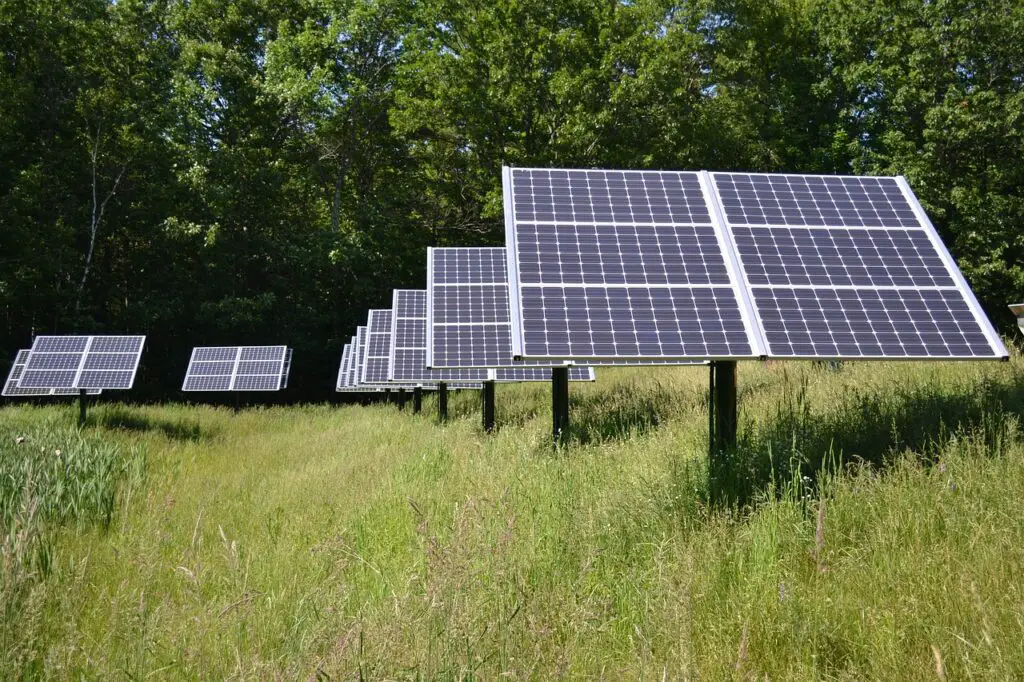A solar battery and a car battery are both essential in their domains.
They have a peculiarity in that they look almost identical. Due to such similarity, many might have tried to use a solar battery to start a car or at least thought of it.
This piece of writing addresses the issue of using a solar battery to start a car in 2023.
But what exactly is the answer? What are the influencing factors? And can a solar battery start a car? Read more to find out!
What Is A Solar Battery?
A solar battery is a battery that stores energy generated from solar panels. It is rechargeable.
During the daytime, PV panels generate excess energy from sunlight and heat. This energy can either be fed back to the power grid or stored in solar batteries.
During the nighttime, PV panels cannot generate energy due to the absence of sunlight. That is when the energy stored in solar batteries is used.
Most people either use solar batteries as the main storage for energy or as a backup in case of a blackout.
What Is A Car Battery?
A car battery is the heart of the electrical system of any car. A modern car will not work without the configuration of a car battery.
A car battery supplies instant power to jumpstart the vehicle. It supplies power to the ignition system and keeps the electrical system up and running.
It also does an important task of regulating the voltage. As voltage fluctuations may damage the electrical system, a car battery controls voltage surges.
A car battery is a rechargeable battery that needs replacement every 7-8 years. In short, it provides high current for a short period to start the engine and keep the electrical system running.
How Do Solar Batteries Work?
The working principle of solar batteries finds its base in the photovoltaic effect.
Photons from sunlight knock electrons in the panel into a higher state of energy. This creates a flow of electricity.
This causes a movement of charged particles that produces a direct current (DC). An inverter facilitates conversion from DC power to AC.
It is often the case that panels produce more energy than required. This energy is stored in a battery for subsequent use.
Solar batteries are lithium-ion batteries. They are efficient and have an extended lifespan.
How Do Car Batteries Work?
Car batteries power the electrical system of the car. The major components in a car battery are the anode, cathode and chemical solution.
When one switches on the ignition, there is a sequence of reactions that starts. An alternator produces electrons that a belt transfers into a battery.
This activates the chemical solution within the battery which generates an electrical charge.
This electrical charge powers the battery as the chemical energy in the battery is converted into electrical energy. This chain reaction continues and the electrical system of the car is powered.
The battery recharges as the alternator generates current back into the battery.
Difference Between A Car Battery And A Solar Battery
The differences between a solar battery and a car battery are as follows:
Chemical Reaction
Car batteries produce a high amount of energy within a short span to start the engine. Once the engine starts, it generates the rest of the electrical supply.
Solar batteries cannot generate this sort of energy within a short time. They can only generate as much as to power the lights.
Battery Type
Car batteries have deep-cycle lead-acid batteries. These are rechargeable batteries that can start and ignite.
Solar batteries are either lithium-ion batteries or lead-acid batteries. They can light up a home for extended periods with long durability.
Cold Cranking Amps
Cold Cranking Amps are a measure of the ability of a battery to start an engine in cold temperatures. Technically, it refers to the amps that a battery can generate at 18 °C for 30 seconds.
A higher CCA reflects the battery’s ability to start in cold temperatures.
Car batteries need 650-800 CCAs which is enough to start the engine. Solar batteries have a CCA rating of 200-300, which is enough for solar lights.
Design
The only difference, in this case, is the thickness of the plates.
In car batteries, two thin plates submerge in sulfur acid and cause an electrolyte-producing reaction. In solar batteries, there are two thick plates built for longevity.
Discharge Rates
Due to the thin plates, car batteries can run for up to 3 months without a recharge.
Solar batteries can run up to 30 years without a recharge. They discharge during the night and charge during the day.
Can You Use Solar Battery in Your Car?
Solar batteries and car batteries have a major difference that influences this issue.
Solar batteries or deep cycle batteries generate controlled energy for long durations.
Car batteries, on the other hand, generate a high rate of current to start the engine. Subsequently, the alternator continues the show and maintains the operation of the engine.
By doing so, car batteries generate a higher rate of energy within a short time. This rate of energy is higher than the constant rate of energy generated by solar batteries.
The engineering specifications of a solar battery are inadequate to use it to start a car. The features of a solar battery do not qualify it to use with a car.
Due to the difference in functions of both batteries, they cannot replace each other. Therefore, it can be concluded that one cannot use a solar battery to start a car.
Conclusion
It would not be wise to use a solar battery to start a car or to use a car battery to store energy. Both types of batteries have their unique properties which are meant to serve various purposes.
Car batteries generate a high rate of energy that cannot be generated by a solar battery. The difference in design and function is responsible for the inability of a solar battery to start a car.







